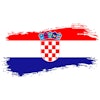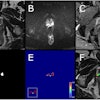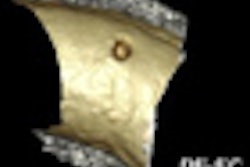
NEW YORK (Reuters Health), Jul 27 - Young adult survivors of childhood cancer have an "alarmingly" high rate of subclinical cardiac dysfunction, researchers reported July 26 in the Archives of Internal Medicine.
More than a quarter (27.0%) of echocardiograms reviewed showed subclinical left ventricular dysfunction at the first outpatient clinic visit for late effects of childhood cancer treatment, Dr. Helena J. van der Pal from the Emma Children's Hospital Academic Medical Center, Amsterdam, the Netherlands, and colleagues found.
"Approximately three out of four childhood cancer survivors will develop one or more serious late effects; heart disease and cardiac mortality are some of the most serious late effects of treatment," Dr. van der Pal told Reuters Health by e-mail.
The study team analyzed the echocardiograms of 514 childhood cancer survivors (surviving five years or more and followed for an average of 15.4 years) who were treated with various potentially cardiotoxic therapies.
The researchers defined "subclinical cardiac dysfunction" as left ventricular shortening fraction (LVSF) of less than 30%. The shortening fraction reflects the change in the diameter of the left ventricle between the systole and diastole; in other words: (LVED - LVES)/LVED.
The median overall LVSF was 33.1%, with a range of 13.0% to 56.0%.
At age 23, 139 childhood cancer survivors (27.0%) had subclinical cardiac dysfunction. "This is an alarmingly high percentage in this young patient population with a median age at screening of only 22.7 years (range 18.0-39.1 years) and a long life-expectancy," Dr. van der Pal said.
Two patients had an LVSF of less than 15%, 29 had an LVSF of 15% to 23%, and 108 had an LVSF of 24% to 29%.
The study also showed, according to Dr. van der Pal, that survivors of childhood cancer treated with either anthracyclines or radiation involving the heart region are at risk of heart disease. "Especially survivors treated with a combination of anthracyclines and radiotherapy involving the heart region, those treated with high cumulative doses of anthracyclines and at a younger age are at highest risk," she noted.
In a multivariate linear regression model, younger age at diagnosis, higher cumulative anthracycline dose, and radiotherapy to the thorax were significantly associated with abnormal LVSF. In contrast to most other studies, longer time since diagnosis was associated with higher LVSF measurements. "However, the suggestion of an improvement in LVSF over time should not encourage a wait-and-see policy," the authors say.
There was no evidence that gender, high-dose cyclophosphamide, or ifosfamide were risk factors for cardiac dysfunction. Use of vincristine also did not appear to have a significant effect on LVSF. Daunorubicin seemed less cardiotoxic than other anthracycline derivatives (doxorubicin and epirubicin, which were equally cardiotoxic).
In their next study, the researchers will investigate ties between abnormal LVSF and the development of clinical cardiovascular disease, something they were unable to do in the current study.
The current study, Dr. van der Pal said, provides a strong reminder that survivors of childhood cancer need "continued risk-based (based on cancer treatment received) follow-up long after cancer treatment, maybe even life-long, but we don't know that yet."
"Survivors who received either anthracyclines or radiotherapy involving the heart region should receive cardiac follow-up by assessing heart function either by echocardiography or MUGA (Multiple Gated Acquisition scan), in order to detect subclinical cardiac dysfunction," she told Reuters Health.
Data from the Studies of Left Ventricular Dysfunction (SOLVD), she mentioned, show that treatment of subclinical heart failure with either ACE-inhibitors and/or beta-blockers improves outcome, although etiology of cardiac disease in these patients is different than in survivors of childhood cancer.
The Netherlands, Dr. van der Pal noted, has nationwide evidence-based treatment-related follow-up guidelines for survivors of childhood cancer: "For anthracyclines and/or radiotherapy involving the heart region, we advise screening by either echocardiography or MUGA every 5 years post-cancer diagnosis when a survivor received less than 300 mg/m2 anthracyclines or less than 30 Gy radiotherapy (relatively 'low' dose) or every 2-3 years when a survivor received 300 mg/m2 or more anthracyclines, 30 Gy or more radiotherapy or any combination of anthracyclines and radiotherapy involving the heart region."
By Megan Brooks
Source: http://link.reuters.com/dud69m
Arch Intern Med 2010;170:1247-1255.
Last Updated: 2010-07-26 16:44:17 -0400 (Reuters Health)
Related Reading
Database identifies radiation therapy toxicities in kids, July 15, 2010
Cancer survivors have higher death risk for decades, July 14, 2010
Cancer will kill 13.2 million a year by 2030: U.N., June 2, 2010
Childhood cancer survivors at increased heart risk, February 11, 2010
Copyright © 2010 Reuters Limited. All rights reserved. Republication or redistribution of Reuters content, including by framing or similar means, is expressly prohibited without the prior written consent of Reuters. Reuters shall not be liable for any errors or delays in the content, or for any actions taken in reliance thereon. Reuters and the Reuters sphere logo are registered trademarks and trademarks of the Reuters group of companies around the world.


















